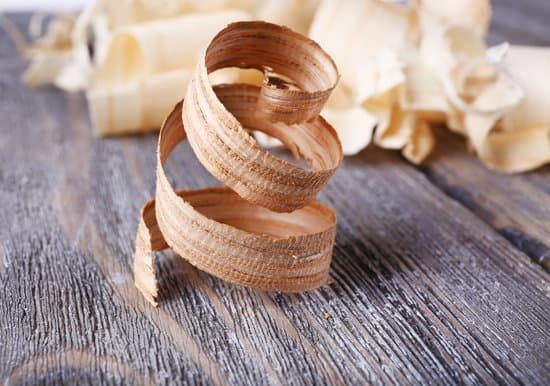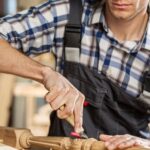Woodworking planes are essential tools in a woodworker’s arsenal, each serving a specific purpose in shaping and smoothing wood. Understanding the different types of woodworking planes and their uses can greatly enhance the precision and quality of woodworking projects. From bench planes to block planes, joinery planes to rabbet planes, each type offers unique functionalities that cater to various woodworking needs.
In this comprehensive guide, we will delve into the world of woodworking planes, exploring their individual uses and benefits. Whether you’re a seasoned woodworker or just starting out, having a thorough understanding of these essential tools is crucial for achieving professional results in your woodworking endeavors.
Throughout this article, we will take an in-depth look at the different types of woodworking planes and how they contribute to creating beautifully crafted woodwork. By understanding the role of each plane, you will be better equipped to choose the right tool for your specific woodworking project and achieve impeccable results. Let’s begin our exploration of woodworking planes and their diverse applications in the world of carpentry.
Types of Woodworking Planes
Woodworking planes are essential tools for anyone working with wood, as they allow for the precise shaping, smoothing, and joining of wood pieces. There are various types of woodworking planes, each designed for specific tasks and functions. Understanding the different types of woodworking planes and their uses can greatly improve the quality and efficiency of your woodworking projects.
Here is a comprehensive guide to the different types of woodworking planes:
- Bench Planes: These are the most commonly used woodworking planes and are essential for flattening, smoothing, and shaping wood surfaces.
- Smoothing Planes: These planes are specifically designed for creating a polished finish on woodwork, removing any imperfections or roughness.
- Block Planes: Known for their versatility, block planes are ideal for end-grain work, chamfering edges, and fine tuning joints.
- Joinery Planes: These specialty planes are used for creating specific joints in woodworking such as dovetails, rabbets, and grooves.
Understanding the unique functions of each type of woodworking plane is crucial in determining which plane will best suit the needs of your project. Whether you’re looking to flatten a surface, create seamless joints, or add a professional finish to your woodwork, there’s a specialized plane designed to help you achieve your desired results.
In addition to these common types of woodworking planes listed above, there are also other specialty planes such as rabbet planes and shoulder planes that serve specific purposes in woodworking. Learning about each type of plane and how it can be utilized will enhance your skills as a woodworker and ensure that you choose the right tool for your project.
What Are All The Different Woodworking Planes Used For? Understanding their individual uses can significantly impact the quality of your craftsmanship.
The Uses of Bench Planes in Woodworking
Bench planes are an essential tool in woodworking, used for shaping, smoothing, and leveling wood surfaces. They come in various sizes and styles, each serving a specific purpose in the woodworking process. Whether you are a seasoned carpenter or a novice woodworker, understanding the uses of bench planes is crucial for achieving professional and polished results in your projects.
One of the primary uses of bench planes is to flatten and smooth large wooden surfaces such as tabletops, doors, and panels. The longer length of bench planes makes them ideal for removing any bumps, twists, or rough patches on the wood, resulting in a flat and even surface. Additionally, these versatile planes can also be used to straighten edges and square corners, making them indispensable for creating well-crafted joinery.
In addition to their leveling and smoothing capabilities, bench planes are also commonly used for shaping and chamfering wood. By adjusting the blade depth and angle, woodworkers can create beveled edges or intricate profiles on their workpieces with precision. This makes bench planes a valuable tool for adding decorative elements to furniture pieces or other woodworking projects.
| Uses of Bench Planes | Description |
|---|---|
| Leveling and Smoothing | Flattening large wooden surfaces and creating an even finish. |
| Shaping and Chamfering | Used to create beveled edges or intricate profiles on workpieces. |
Smoothing Planes
Function of Smoothing Planes
The primary function of smoothing planes is to provide a final surface finish by removing any tear-out, scratches, or tool marks left behind by previous woodworking tools. They are designed with a fine blade set at a low angle, allowing them to shave off thin layers of wood with precision. This results in a glass-like surface that is ready for finishing touches such as sanding or varnishing.
Types of Smoothing Planes
There are various types of smoothing planes available, each serving a specific purpose based on the size and type of woodworking project. Some common types include the traditional bench plane no. 4, which is suitable for general smoothing tasks; the block plane for smaller-scale projects; and the low-angle block plane for end grain work. Each type offers its own unique features and benefits to cater to different woodworking needs.
Tips for Using Smoothing Planes
When using smoothing planes, it is important to ensure that the blade is sharp and properly adjusted to achieve the best results. Additionally, proper technique, including holding the plane at the correct angle and exerting even pressure while planing, will contribute to achieving a smooth surface without tear-out or unevenness. By understanding how to use smoothing planes effectively, woodworkers can elevate the quality of their finished products and achieve professional results in their craftsmanship.
Exploring the Versatility of Block Planes
Block planes are a versatile tool in woodworking that offer a wide range of uses for craftsmen. These handy planes are small, lightweight, and easy to maneuver, making them an essential addition to any woodworking toolkit. Whether you are smoothing rough edges, chamfering sharp corners, or trimming end grain, block planes are invaluable for achieving precision and accuracy in your woodworking projects.
One of the primary uses of block planes is for end grain work. The low angle of the blade and the adjustable mouth of the plane make it ideal for trimming end grain on boards and creating clean, smooth surfaces. Additionally, block planes are also great for removing sharp edges and corners, as well as shaping and chamfering wood to add decorative details to your pieces.
Below are some common uses for block planes:
- Smoothing rough edges on boards
- Chamfering sharp corners for a more polished look
- Trimming end grain with precision
- Shaping and adding decorative details to wooden pieces
Moreover, block planes are particularly useful for fitting joints or adjusting the fit of mortise-and-tenon joints. Their compact size allows them to reach tight spaces where larger planes cannot access. This makes block planes an essential tool for fine-tuning joinery work with precision and ease.
Understanding the Specialty of Joinery Planes in Woodworking
Joinery planes are a specific type of woodworking plane that are designed for creating precise and accurate joints in woodworking projects. These planes are essential for any woodworker who wants to create high-quality, professional-looking furniture, cabinetry, or other wooden structures. Joinery planes come in a variety of shapes and sizes, each with its own specific use and function.
One of the most common types of joinery planes is the shoulder plane, which is used for trimming and fine-tuning the shoulders of tenons and other joints. This type of plane typically has a short, wide blade that allows for precise cutting in tight spaces.
Another type of joinery plane is the router plane, which is used for cleaning up grooves, dadoes, and other recesses in woodworking joints. The router plane features a flat base that rests directly on the surface of the wood, allowing for accurate and controlled cutting.
In addition to shoulder planes and router planes, there are also specialty joinery planes such as rabbet planes and plow planes that are designed for specific tasks within woodworking joinery. Rabbet planes are used for cutting rabbets (or rebates) along the edge or at the end of a piece of wood, while plow planes are used for creating grooves or channels in wood.
Each type of joinery plane serves a unique purpose in woodworking and can help woodworkers achieve precise, high-quality joints in their projects.
| Type of Joinery Plane | Function |
|---|---|
| Shoulder Plane | Trimming and fine-tuning tenon shoulders |
| Router Plane | Cleaning up grooves and recesses in joints |
| Rabbet Plane | Cutting rabbets along edges or ends of wood pieces |
| Plow Plane | Creating grooves or channels in wood |
How Rabbet Planes Make Woodworking Joints Neat and Precise
Rabbet planes are an essential tool in woodworking that is designed specifically for creating precise and neat joints in woodwork. These planes are used to cut rabbets, also known as rebates or dadoes, which are recessed slots or channels along the edge or end of a piece of wood. This type of plane is ideal for creating joints for drawers, cabinets, and other furniture pieces where precision and accuracy are crucial.
What Are Rabbet Planes?
Rabbet planes are a type of bench plane that features a fence or depth stop to guide the cutting edge as it removes material from the wood. They typically have a wider body than other types of bench planes and may have a skewed blade to allow for cutting against the grain more effectively. The design of the rabbet plane allows woodworkers to create clean and straight cuts along the edges or ends of boards to form precise joints.
Creating Neat Woodworking Joints
One of the primary uses of rabbet planes is to create neat and precise woodworking joints. By using these planes, woodworkers can accurately shave off just enough material from the edge of a board to create a perfect fit with another piece of wood, resulting in seamless joinery. Rabbet planes are especially useful for making dado joints for shelving units, housing joints for cabinet frames, and rebates for inset panels in doors and drawers.
The Benefits of Using Shoulder Planes in Woodworking Projects
Shoulder planes are a crucial tool in a woodworker’s arsenal, providing numerous benefits and advantages for various woodworking projects. This type of woodworking plane is specifically designed to trim and refine the shoulders and cheeks of a woodworking joint, such as tenons or rabbets. The shoulder plane is uniquely constructed with a low-angle blade that extends to the edges of the plane, allowing it to reach into tight spaces and create clean, precise cuts.
One of the main benefits of using shoulder planes in woodworking projects is their ability to trim and square up joints with precision. Whether it’s creating a crisp shoulder on a tenon or smoothing out the cheeks of a rabbet joint, shoulder planes excel at achieving clean and accurate results. Woodworkers can rely on these planes to ensure that their joints fit together seamlessly, resulting in strong and well-crafted furniture or woodworking pieces.
Additionally, shoulder planes are also valuable for refining and adjusting joinery work without affecting the other areas of the wood surface. Their compact size and maneuverability make them ideal for fine-tuning small areas while maintaining control over the cutting depth. This level of precision is essential for ensuring that the final fit of the joint is perfect, ultimately contributing to the overall quality and durability of the finished woodworking project.
Conclusion
In conclusion, woodworking planes are essential tools in any woodworker’s arsenal, each with its unique purpose and function. From bench planes to block planes, joinery planes to shoulder planes, these tools serve to smooth, shape, and create precise joints in woodwork. Understanding the different types of woodworking planes and their uses is crucial in choosing the right tool for specific projects.
When selecting a woodworking plane for a project, it is essential to consider factors such as the type of wood being used, the desired finish, and the specific task at hand. Bench planes are ideal for flattening and smoothing large surfaces, while smoothing planes provide a polished finish for fine woodworking.
Block planes offer versatility in various tasks such as beveling edges and end-grain work. Joinery planes excel in creating precise joints, while rabbet and shoulder planes are perfect for neat and accurate joint work.
Ultimately, knowing what all the different woodworking planes are used for can lead to more efficient and effective woodworking projects. It allows craftsmen to achieve precision and finesse in their work while enhancing the overall quality of finished pieces. By understanding the range of functions that each type of plane offers, woodworkers can make informed decisions about which tools are best suited for their specific needs – ultimately improving their woodworking outcomes.
Frequently Asked Questions
What Are Different Wood Planes For?
Different wood planes are used for various woodworking tasks such as shaping, smoothing, and leveling wood surfaces. Each type of plane has its own specific function and design, allowing woodworkers to achieve different results.
What Are Planes Used for in Woodworking?
Planes are essential tools in woodworking as they are used to flatten, smooth, and shape wooden surfaces. Whether it’s creating a perfectly flat tabletop or shaping intricate details on a piece of furniture, planes allow woodworkers to work with precision and accuracy.
What Are the Different Types of Planes in Workshop?
In the workshop, there are several types of planes that serve different purposes. These include bench planes like the jack plane and smoothing plane for general surface preparation, jointer planes for straightening edges and faces, block planes for trimming end grain and chamfering edges, and specialty planes like shoulder planes for refining joints and router planes for cutting recesses.
Each type of plane is designed to handle specific tasks effectively in woodworking projects.

Hi everyone! I’m a woodworker and blogger, and this is my woodworking blog. In my blog, I share tips and tricks for woodworkers of all skill levels, as well as project ideas that you can try yourself.





